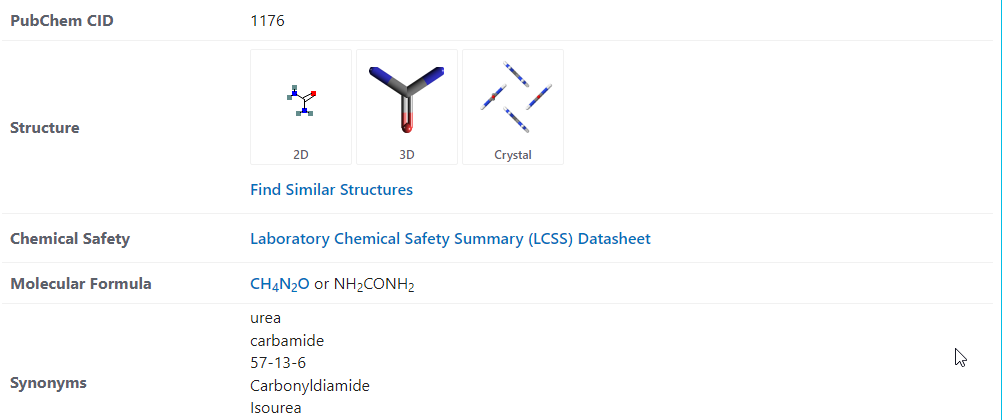.
The reaction between urea and sulfuric acid produces ammonium sulfate and carbon dioxide.
This is an example of an acid-base neutralization reaction.

.
.
What Happens When Sulphuric Acid Reacts with Urea?
.

.
Urea is added to sulfuric acid to initiate a reaction between the two compounds. This reaction is an acid-base neutralization reaction, in which the urea acts as a weak base and the sulfuric acid acts as a strong acid. When urea is added to sulfuric acid, it reacts with the acid to form ammonium sulfate and carbon dioxide gas.
.

.
.
.

.
The balanced chemical equation for the reaction between sulfuric acid and urea is:
(NH2)2CO + H2SO4 → (NH4)2SO4 + CO2 + H2O
.
In this equation, (NH2)2CO represents urea, H2SO4 represents sulfuric acid, (NH4)2SO4 represents ammonium sulfate, CO2 represents carbon dioxide gas, and H2O represents water.
The reaction is exothermic, meaning that it releases heat. It is also a reversible reaction, which means that the products can react with each other to form the original reactants. However, in practice, the reaction usually proceeds to completion, with most of the urea being converted into ammonium sulfate.
The ammonium sulfate that is formed is a white crystalline solid that is commonly used as a fertilizer. The carbon dioxide gas that is produced can be collected and used for various purposes, such as in carbonation of beverages or in fire extinguishers.
Overall, the reaction between sulfuric acid and urea is an important industrial process that has a variety of applications, such as in the production of fertilizers, plastics, and pharmaceuticals.
.
The next parts explain this reaction in tables.
I recommend you to read the helpful article “Ammonium Sulfate” article from Environmental Inorganic Chemistry for Engineers, 2017 available online at Science Direct.
.
What Fertilizer Is Made with Sulfuric Acid?
.
The reaction between urea and sulfuric acid is often used in the production of ammonium sulfate, which is a common fertilizer.
.
Ammonium sulfate is produced when ammonia gas is reacted with sulfuric acid, but this reaction can be slow and inefficient. By using urea instead of ammonia gas, the reaction can be made faster and more efficient.
Additionally, urea is a more stable and safer compound to handle than ammonia gas, which can be dangerous if not handled properly.
.
The Reaction between Sulfuric Acid and Urea
| Reactants | Sulfuric acid (H2SO4) and Urea (CH4N2O) |
| Procedure | 1. Add a small amount of urea to a beaker or flask. |
| 2. Slowly add concentrated sulfuric acid to the beaker or flask, stirring constantly. | |
| 3. Observe the reaction as the mixture fizzes and heats up. | |
| 4. Allow the mixture to cool, then dilute with water if desired. | |
| Products | Ammonium sulfate ((NH4)2SO4) and carbon dioxide (CO2) are produced by the reaction between sulfuric acid and urea. |
| Equation | H2SO4 + CH4N2O → (NH4)2SO4 + CO2 |
.
It’s important to note that sulfuric acid is highly corrosive and can be dangerous if not handled properly. Safety precautions should always be taken when working with concentrated acids.
.
Ammonium Sulfate Production
Ammonium sulfate is produced on a large scale for use as a fertilizer, and the global production level is significant.
According to the United States Geological Survey (USGS), the global production of ammonium sulfate was estimated to be approximately 25 million metric tons in 2020.
.
| Reactants | Ammonia gas (NH3) and Sulfuric acid (H2SO4) |
| Procedure | 1. Gaseous ammonia is produced by the Haber-Bosch process, which involves the reaction of nitrogen gas (N2) and hydrogen gas (H2) under high pressure and temperature in the presence of a catalyst. |
| 2. The ammonia gas is then reacted with concentrated sulfuric acid in a reactor vessel, with the reaction exothermic and typically carried out at a temperature of 60-70°C. | |
| 3. The reaction between ammonia and sulfuric acid produces ammonium sulfate ((NH4)2SO4) and water (H2O). | |
| 4. The mixture of ammonium sulfate and water is then cooled and allowed to crystallize. | |
| 5. The crystals of ammonium sulfate are separated from the remaining liquid by centrifugation or filtration. | |
| Products | The primary product of this process is ammonium sulfate, which is a white crystalline solid. The byproduct of the reaction is water. |
| Equation | NH3 + H2SO4 → (NH4)2SO4 + H2O |
.
It’s important to note that this is just one example of the process for producing ammonium sulfate, and there may be variations depending on the specific application and manufacturing requirements.
.
Ammonium Sulfate Uses
.
Here’s a table outlining the various uses of ammonium sulfate, along with a brief explanation of each:
.
| Use | Explanation |
| Fertilizer | Ammonium sulfate is a common fertilizer that provides essential nutrients to plants, including nitrogen and sulfur. It is often used on crops such as wheat, corn, and soybeans. |
| Food additive | Ammonium sulfate is used as a food additive in breads and other baked goods to help improve texture and increase the shelf life. |
| Flame retardant | Ammonium sulfate is used as a flame retardant in plastics, paper, and textiles. It helps to prevent fires from spreading by releasing water vapor when exposed to heat. |
| Pharmaceutical | Ammonium sulfate is used as a reagent in the production of pharmaceuticals, including antibiotics and other drugs. It is used as a purification agent in the production process. |
| Water treatment | Ammonium sulfate is used in water treatment to remove impurities and to reduce the concentration of harmful substances such as lead and mercury. It reacts with the impurities to form insoluble particles that can be removed from the water. |
| Industrial applications | Ammonium sulfate is used in a variety of industrial applications, including in the production of pulp and paper, dyes and pigments, and leather tanning. It is used as a source of nitrogen and sulfur, and also helps to control pH levels. |
.
It’s worth noting that while ammonium sulfate is a useful compound with many applications, it can be harmful if ingested or inhaled in large quantities.
Proper safety precautions should always be taken when handling ammonium sulfate, and it should be stored in a cool, dry place away from incompatible materials.
.
Ammonium Sulfate Fertilizer
Ammonium sulfate is a popular fertilizer that is commonly used in agriculture to supply essential nutrients to plants. It is a rich source of both nitrogen and sulfur, which are essential elements for plant growth and development.
When ammonium sulfate fertilizer is applied to the soil, it dissociates into ammonium ions (NH4+) and sulfate ions (SO4^2-), which are readily absorbed by plant roots.
The ammonium ions serve as a source of nitrogen for the plants, which is an essential element for the synthesis of proteins, nucleic acids, and other cellular components.
The sulfate ions, on the other hand, are important for the synthesis of amino acids, which are the building blocks of proteins.
.

.
Ammonium sulfate fertilizer is particularly effective in soils that are deficient in nitrogen and sulfur. It is also used to lower the pH of alkaline soils, as the ammonium ions produced during the dissociation process help to increase soil acidity.
.
However, it is important to note that over-application of ammonium sulfate fertilizer can lead to soil acidification and can result in the leaching of nitrates and sulfates into groundwater, which can have harmful environmental effects. Therefore, it is important to use fertilizers in a responsible and sustainable manner, following recommended application rates and guidelines.
.
Ammonium Sulfate Fertilizer Benefits
Ammonium sulfate fertilizer is an important source of nitrogen and sulfur in agriculture and horticulture.
Nitrogen and sulfur are essential elements for plant growth and development, playing key roles in the formation of proteins, enzymes, and other important cellular components.
As such, the application of ammonium sulfate fertilizer can provide plants with the essential nutrients they need to grow and thrive, ultimately increasing crop yields and improving overall plant health.
In addition to its nutrient content, ammonium sulfate fertilizer can also help to improve soil fertility and reduce nitrogen loss through volatilization.
By promoting the growth of beneficial microorganisms in the soil, ammonium sulfate can help to improve soil structure and nutrient availability, ultimately leading to healthier plants and better yields.
Moreover, because ammonium sulfate releases ammonium ions slowly over time, it can help to reduce nitrogen loss through volatilization, ensuring that plants have a stable source of nitrogen to support their growth and development.
Here’s a table outlining some of the benefits of ammonium sulfate fertilizer.
.
Ammonium Sulfate Fertilizer Benefits
| Benefit | Description |
| Provides essential nutrients | Ammonium sulfate is a rich source of nitrogen and sulfur, which are essential for plant growth and development. |
| Increases crop yield | Ammonium sulfate fertilizer can increase crop yield by promoting healthy plant growth. |
| Improves soil fertility | The nitrogen and sulfur in ammonium sulfate help to improve soil fertility by increasing the nutrient content and promoting the growth of beneficial microorganisms. |
| Lowers soil pH | Ammonium sulfate can lower soil pH, making it more acidic and suitable for acid-loving plants. |
| Reduces nitrogen loss | Ammonium sulfate fertilizer can help reduce nitrogen loss through volatilization by providing a stable source of ammonium ions. |
| Versatile application | Ammonium sulfate can be used on a variety of crops, including fruits, vegetables, grains, and ornamental plants. |
.

Writer: Encieh Arbabi
Marketing Manager at Amoot Iranian Company
